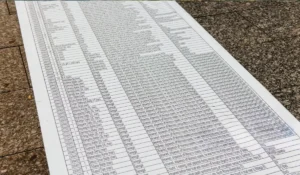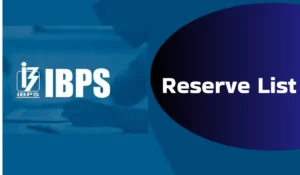
TOPIC: Miscellaneous
Directions (1-5): Study the following information carefully and answer the question given below:
Eight persons A, B, C, D, E, F, G and H are sitting around a circular table. Four of them faces towards centre while the rest of them faces opposite to centre. Each of them was born in a different month of the same year starting from January to August but not necessarily in the same order. E is the second oldest. C who was born in the month of May is an immediate neighbour of A. The persons who were born in June and March are sitting opposite to each other. E is sitting third to the right of D who faces outside. There is only one person sitting between D and F who is not immediate neighbor of E. The person sitting third to the right of F was born in April. H is the youngest and sits opposite to E. G faces a direction opposite to that of F (i.e. if one is facing inside, the other must be facing opposite to the center). Both the immediate neighbours of A are facing towards the center. B sits second to the right of E. D is an immediate neighbour of B. D who is the second youngest sits opposite to A. H faces towards the center. G is older than F.
Q1. Who among the following was born in the month of April?
(a) B
(b) C
(c) E
(d) A
(e) H
Q2. Who among the following sits third to the left of the person who was born in May?
(a) A
(b) C
(c) E
(d) D
(e) H
Q3. Who among the following is the oldest?
(a) B
(b) C
(c) E
(d) A
(e) H
Q4. How many persons facing towards the centre are older than B?
(a) Three
(b) One
(c) Two
(d) Four
(e) None of these
Q5. The person sitting sixth to the right of A was born in which of the following months?
(a) January
(b) February
(c) March
(d) April
(e) None of these
Directions (6-10): A word and number arrangement machine when given an input line of words and numbers rearranges them following a particular rule in each step. The following is an illustration of input and rearrangement.
Input : strong 66 37 manage 19 welcome 53 input 48 26 among night
Step I : among strong 37 manage 19 welcome 53 input 48 26 night 65.
Step II : input among strong37 manage 19 welcome 48 26 night 65 54.
Step III : manage input among strong 37 19 welcome 26 night 65 54 47.
Step IV : night manage input among strong 19 welcome 26 65 54 47 38.
Step V : strong night manage input among 19 welcome 65 54 47 38 25.
Step VI : welcome strong night manage input among 65 54 47 38 25 20.
And step VI is the last step of the arrangement.
As per the above rule followed in the above steps, find out in each of the following questions the appropriate step for the input given below;
Input : longest 57 24 strange 74 track 35 way 89 42 random formal
Q6. Which Step number would be the following output?
track strange random longest formal 24 way 90 73 58 41 36.
(a) III
(b) IV
(c) VI
(d) V
(e) II
Q7. How many steps would be needed to complete the arrangement?
(a) VI
(b) V
(c) IV
(d) VII
(e) None of these
Q8. Which of the following would be the step III?
(a) random longest formal 24 strange track 35 way 42 90 73 58.
(b) longest formal 57 24 strange track 35 way 42 random 90 73.
(c) random longest formal 23 strange track 35 way 41 90 73 58.
(d) formal longest 57 24 strange 74 track 35 way 42 random 90.
(e)None of these
Q9. In step VI, ‘strange’ is related to ‘41’ and ‘longest’ is related to ‘73’. In the same way ‘random’ is related to?
(a) 23
(b) 36
(c) 90
(d) 58
(e) 73
Q10. In step V, which of the following word/number would be on the 5th position (from the right)?
(a) 73
(b) way
(c) 90
(d) formal
(e) longest
Direction (11-12): Read the following information carefully and answer the given questions.
Q11. As a part of their sales promotion measures, ‘Star Sports’, a company which produces and sells tennis rackets and balls, wishes to enter into a contract with a leading tennis star for five years for endorsing their products. The move is not a wise one, as no tennis star has ever played for more than three years in the international circuit.
Which of the following is an assumption on which the above assertion is based?
(a) Tennis players, after their retirement from the games, take up assignments such as coaching etc related to tennis.
(b) When new stars come up in tennis, old stars lose their popularity.
(c) The company would not have been able to reap the full benefit of the endorsements in the first three years.
(d) People stop admiring a sports star after they stop playing in international matches.
(e)None of these
Q12. Dr. Michael Clarke, an obesity researcher has put forward the hypothesis that obesity is linked to profession. According to him, the brain consumes more energy than any other organ in the body, and the more it is used, the more energy it consumes. He concludes that people who are in professions like medicine, engineering, teaching and scientific research are less likely to be obese than those in professions like marketing, sales and manufacturing.
Which of the following is an assumption that Dr. Clarke has made?
(a) Physical activity has no role to play in determining a person’s weight.
(b) Professions like marketing place negligible demands on the intellect.
(c) Doctors and scientists are in general more intelligent than marketers.
(d) Professions like marketing are less intellectually demanding than are professions like medicine and scientific research.
(e)None of these
Directions (13-15) Read the following information carefully and answer the questions given below:
Seven books P, Q, R, S, T, U and V are published in same month of the different years- 2010, 2016, 2012, 2001, 2005, 2014 and 2019 but not necessarily in the same order.
Book Q published on an odd numbered year. Only three books published in between Q and U. Book R published 4 years after the year in which S published. V published on the year which is completely divisible by 3. T published on an even numbered year before U. P published one of the years before Q.
Q13. How many books published in between S and V?
(a) None
(b) Two
(c) One
(d) Three
(e) More than three
Q14. Book P published on which of the following year?
(a) 2005
(b) 2012
(c) 2001
(d) 2019
(e) 2016
Q15. Which of the following book was published before R and after S?
(a) T
(b) P
(c) Q
(d) U
(e) V
Solutions

Solutions (6-10):
Sol. (i) For words – All the words are arranged in alphabetical series in ascending order from left to right. That means the word which comes first in alphabetical series arranges first and so on till the last word arranges.
(ii) For numbers – Numbers are arranged in descending order from right to left, in such a way if number is odd subtract one in this number and if number is even adding one in this number.
Input : longest 57 24 strange 74 track 35 way 89 42 random formal
Step I : formal longest 57 24 strange 74 track 35 way 42 random 90.
Step II : longest formal 57 24 strange track 35 way 42 random 90 73.
Step III : random longest formal 24 strange track 35 way 42 90 73 58.
Step IV: strange random longest formal 24 track 35 way 90 73 58 41.
Step V : track strange random longest formal 24 way 90 73 58 41 36.
Step VI : way track strange random longest formal 90 73 58 41 36 23.
S6. Ans. (d)
S7. Ans. (a)
S8. Ans. (a)
S9. Ans. (d)
S10. Ans. (c)
S11. Ans.(d)
Sol. It is unwise to sign up tennis stars for five years as they do not play for more than three years. So, the assumption is that they will lose their popularity once they stop playing internationally.so (d) is the correct answer. (a) is not an assumption to show that the decision is not wise. (c) does not refer to the question of the duration of the contract.
S12. Ans.(d)
Sol. The passage states that the more intellectually demanding a task is, the less obese a person who performs it on a regular basis would be. Therefore, he is assuming that a marketer’s job is less intellectually demanding than those of a doctor or engineer. (b) and (c) is incorrect. (a) is irrelevant.





 IBPS RRB PO 3rd Reserve List 2025 जारी: ...
IBPS RRB PO 3rd Reserve List 2025 जारी: ...
 IBPS RRB क्लर्क Reserve List: प्रोविजनल ...
IBPS RRB क्लर्क Reserve List: प्रोविजनल ...
 IBPS SO 3rd रिजर्व लिस्ट 2025 जारी, Prov...
IBPS SO 3rd रिजर्व लिस्ट 2025 जारी, Prov...








